Attract Talent With a Strong Employer Branding Strategy
authors are vetted experts in their fields and write on topics in which they are extremely knowledgeable. All of our content is peer reviewed and validated by world-class professionals.

Competition for talent is fierce. HR professionals and hiring managers must compete against other companies to attract and hire the best people. Skill gaps are growing wider every day, and hiring managers are under increasing pressure to quickly fill both full-time and freelance positions with top talent.
Compensation alone is no longer enough to entice strong, in-demand candidates to accept a job offer. Moreover, candidate behavior has changed. They now spend more time researching a company before and during the hiring process. If job seekers don’t like what they see online, or can’t find enough information about the company, they won’t apply. In fact, a company’s “poor reputation” is the number two reason candidates choose not to work for an employer, according to Hired’s Global Brand Health Report.
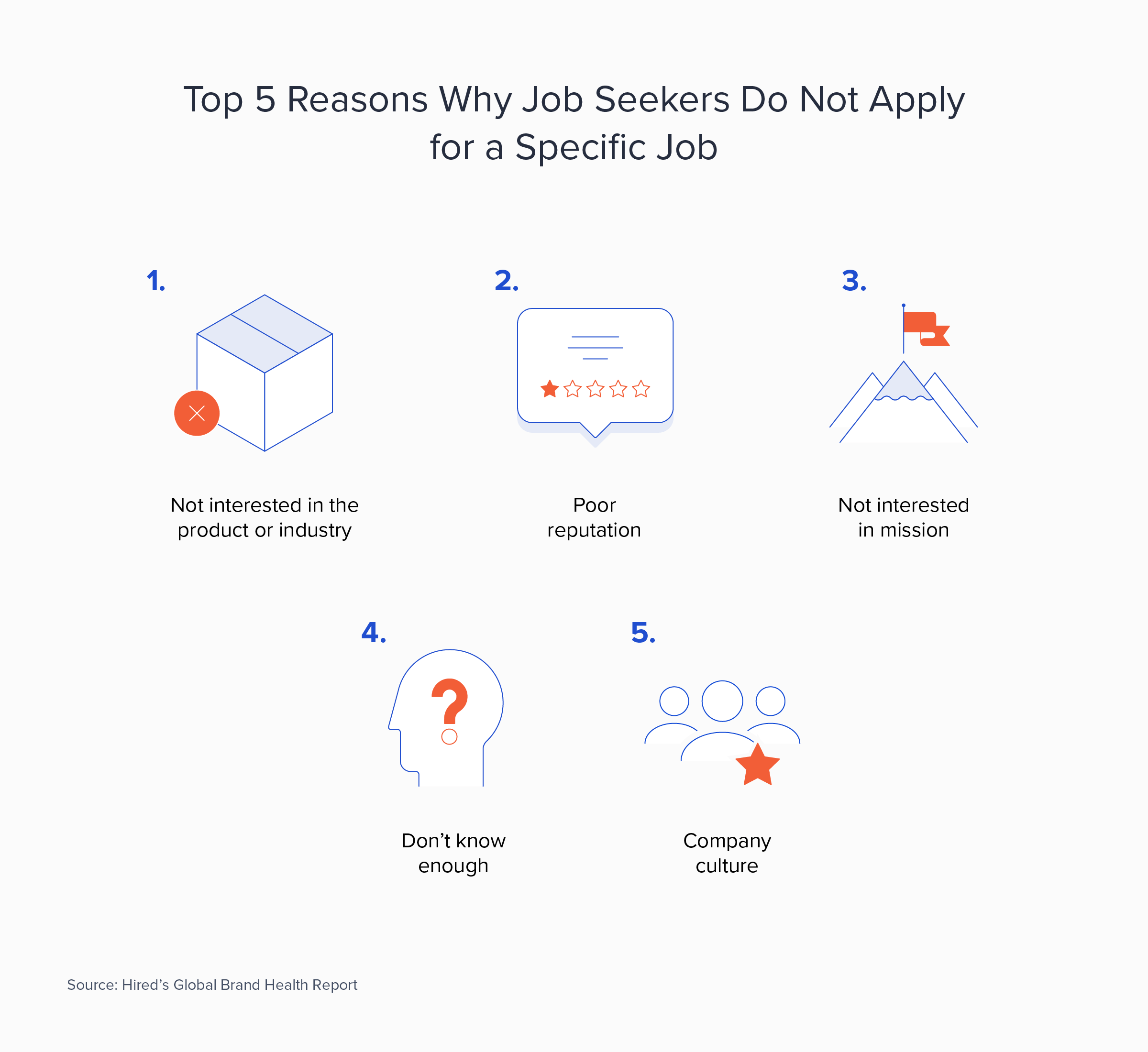
Companies that struggle with this need an employer brand strategy that will convince high-quality candidates to choose their company over a competitor.
Employer Brands Are Proactive
An “employer brand” is similar to a company’s corporate brand reputation. Rather than focusing on how customers perceive the brand, an employer brand focuses on how candidates, potential candidates, and current employees regard the company as a place to work.
An employer brand encompasses all the reasons someone would choose to work—or not work—at a company, including the company’s mission, benefits and perks of the work environment, and future career opportunities. LinkedIn reports that 75% of candidates evaluate a company’s employer brand when applying for a job, and 69% will not apply for a position if they don’t like what they see, even if they’re unemployed. An employer brand strategy speaks to these candidates before HR’s official touchpoints, resulting in more high-quality candidates applying and continuing through the hiring process. HR professionals and recruiters have to proactively make skilled people aware of their company as an attractive place to work through a set of strategic employer brand campaigns.
Deepen the Pool of Strong Candidates
A positive employer brand allows the company to stand out from the crowd. This encourages the strongest talent—including freelancers and those with highly specialized skills—to apply for positions at their company.
Stronger candidates lead to better hires. According to LinkedIn’s Employer Brand Statistics report, companies with a strong employer brand see 50% more qualified applicants, hire employees as much as two times faster, and are able to reduce their cost per hire by 50%.
Control the Message That Already Exists
Your employer brand exists, whether you are actively managing it or not. A strategic plan allows you to take control of the messaging. “When people go searching, they’re more likely to bump into the right stuff,” according to employer brand strategist Brett Minchington, chairman and CEO of Employer Brand International and founder of World Employer Branding Day.
Social media is especially powerful for younger job seekers. Millennials are 2.5 times more likely than Gen Xers or Baby Boomers to share their opinions about employers on social media and review sites, according to CareerArc’s Employer Branding Strategy report. Those opinions can sway candidates; more than half of job seekers (55%) abandon the application process after reading a negative review about a company.
Better Cultural Fits
Raising awareness about what it’s like to work at the company also increases the likelihood that candidates will be a cultural fit. Those for whom the culture does not resonate will opt out. Better cultural fits will increase employee engagement and retention and will encourage in-demand freelancers to accept more projects with your company. Happy employees will also refer friends and colleagues to apply for open positions, reducing time to hire.
How to Start With Your Employer Brand
Make Ambassadors of Your Current Employees
Attracting top talent begins with creating the best employee experience possible. While 96% of talent professionals say employee experience is important, only 52% say their company provides a positive employee experience. This gap presents a chance to stand out among competitors. What would you like to be known for as an employer? What benefits, opportunities, and values best represent your company? How do these factors differentiate you from competitors trying to attract the same talent?
Create an employee value proposition that describes the specific employee benefits at your company. Then, deliver that value proposition and strive to create a positive experience for every employee, job applicant, vendor, and customer. Give your current employees reasons to publicly praise the work environment.
Like it or not, your current employees are your current brand. Job seekers rank recruiters fifth when asked who they trust about what a work environment is really like, behind current employees, online reviews, former employees, and the company website, according to CareerArc research. If the images and stories in your brand campaign don’t match what actual employees are saying, candidates won’t trust your brand or your company.
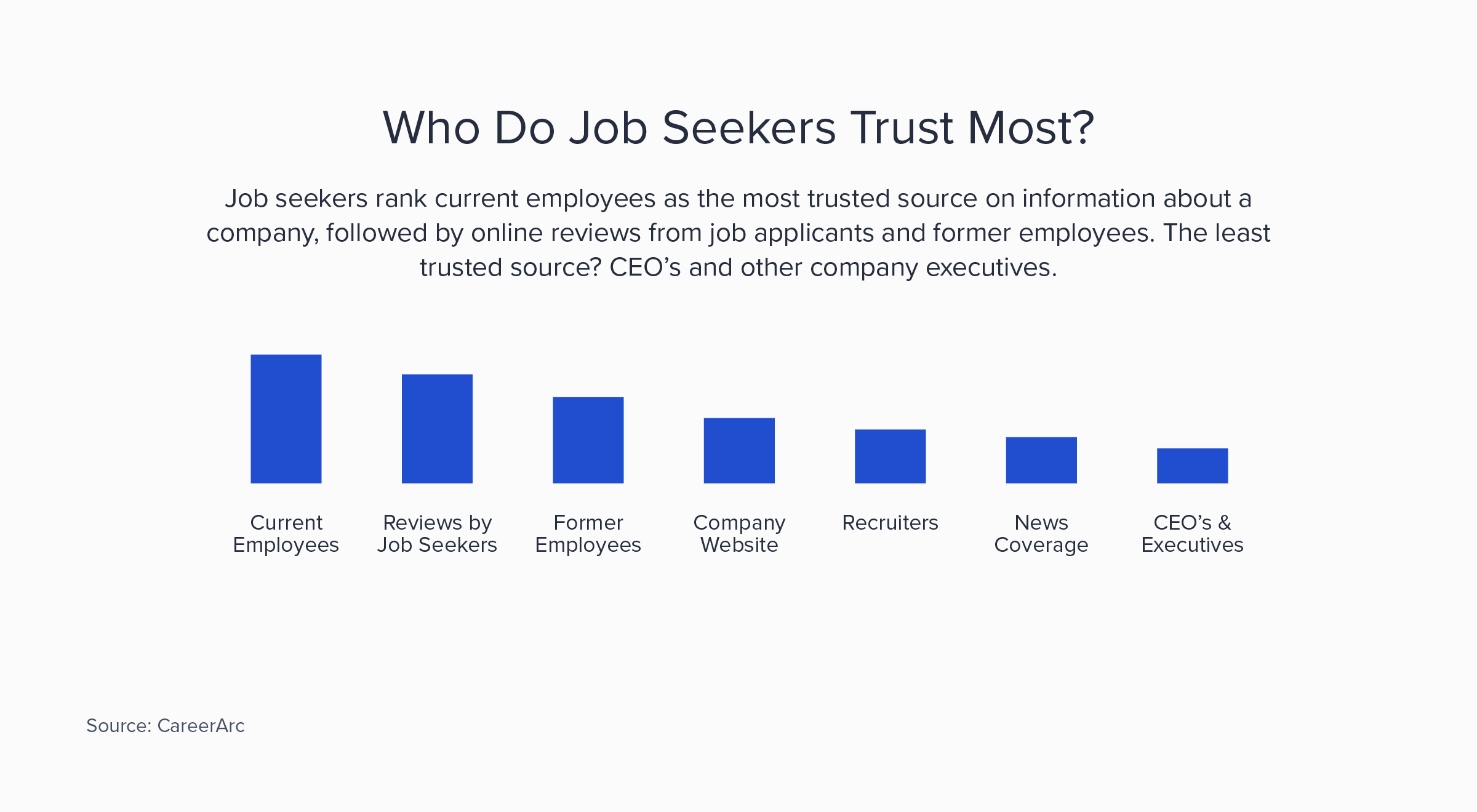
Partner With Marketing To Create Employer Brand Awareness Campaigns
While HR professionals understand the employer brand audience and goals of the campaigns, marketing professionals have the skills to execute those campaigns. Involve marketing in your employer brand strategy from the beginning.
Craft the message from the candidate’s perspective. They want to know why they should work there. They probably care less about when the company was founded and the evolution of its products than about their opportunities to learn new skills and be a part of the company’s future.
Avoid overused platitudes like innovation and collaboration, which won’t differentiate you from competitors. Instead, be authentic in your messaging. Find out why existing employees enjoy their work and include those personal stories.
Google’s career page, famous for its simplicity, is bolstered by the company's employer branding campaigns across Facebook, Instagram, YouTube, Twitter, LinkedIn, and its Life at Google blog. The “Life at Google” campaigns feature employees engaged with social issues that resonate with candidates and employees; for example, the 30th anniversary of the Americans with Disabilities Act. Other Google campaigns tell the stories of individual Google employees or highlight unique Google projects, including Decode with Google 2020.
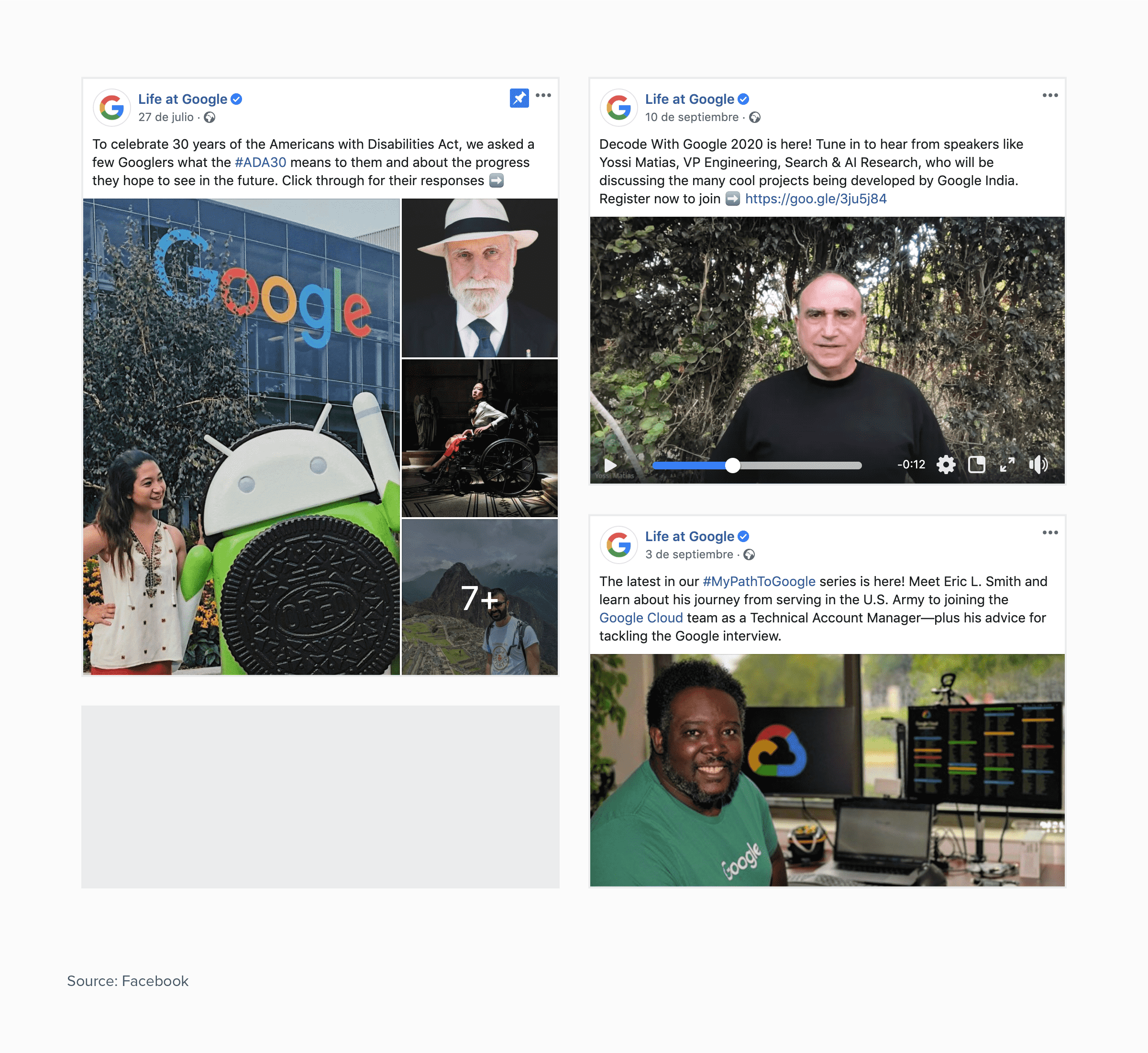
In addition to employer branding campaigns, marketing can help refine messages for specific talent demographics. While salary and benefits are the top factors when deciding whether to accept a job, secondary reasons vary. For example, in North America, work-life balance is the second most sought-after benefit, but the financial health of the company is more important to candidates in the Commonwealth of Independent States (which includes Russia). The Latin American workforce is more interested in career progression opportunities.
Differentiation also exists across generations. Gen Z prioritizes a pleasant work atmosphere over job security, while Millennials and Gen X prefer work-life balance and job security. Tailoring these secondary messages will help your employer brand stand out among competitors.
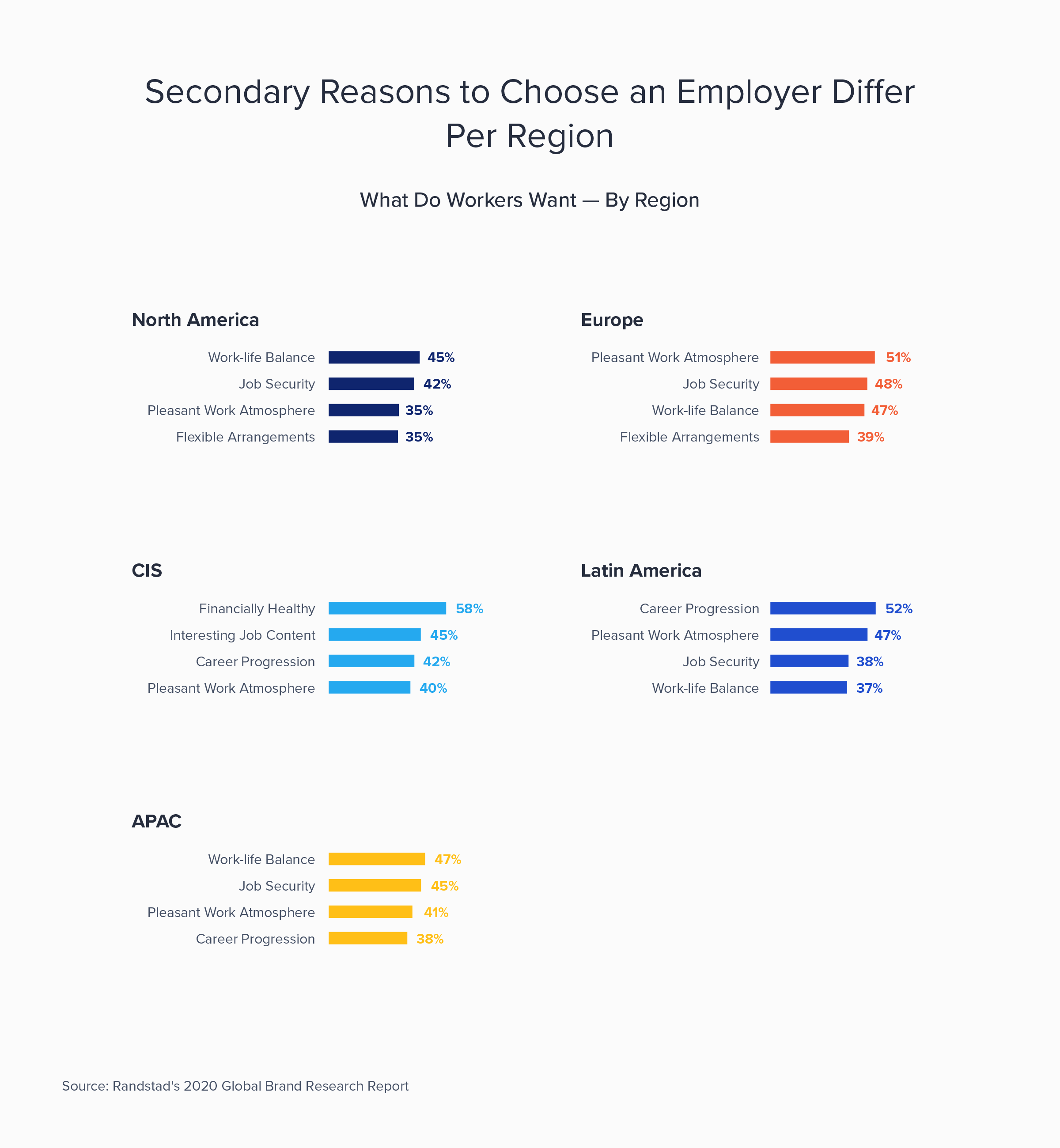
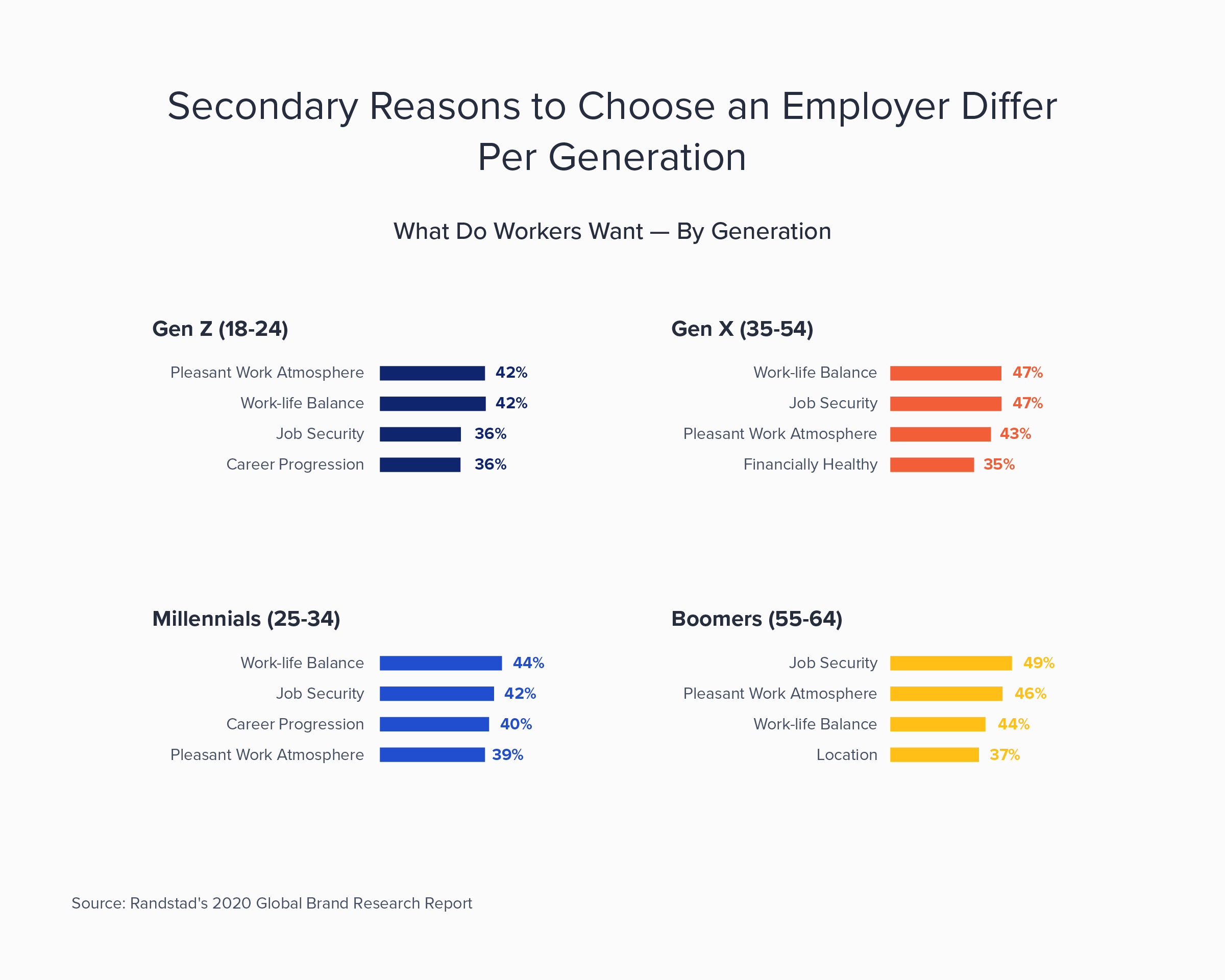
As the competition for talent increases, companies with strong employer brands will consistently attract, engage, and retain the strongest talent. It’s no longer sufficient to just post jobs and wait for resumes to flow in. Hiring managers must go to the social media and employer review sites where candidates are spending time and make an effort to pique their interest. Ad hoc photos of employees playing foosball won't work either. To appeal to top candidates, companies must invest the time and money into a holistic employer brand strategy, leveraging both marketing and technological resources.
